Museum Welcomes President McCartney with Art Stories
Smith Arts
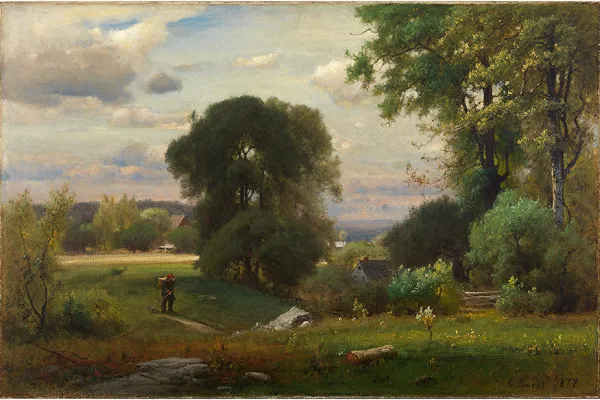
Published October 11, 2013
The Inauguration Kit prepared to help people in the Smith community get to know President Kathleen McCartney as the occasion approaches, includes collections of favorite songs and favorite books.
Beginning Friday, October 11, an exhibition in the Museum of Art helps the college’s 11th president get to know the rich art collection there.
“Art Stories: Personal Experiences with SCMA’s Collection” is a display of 36 works—prints, drawings, photographs, paintings and sculpture—from the museum’s permanent collection chosen by alumnae, students, teachers, friends and neighbors of Smith to help welcome President McCartney and introduce her to the museum.
“Art Stories” will be on display October 11 through February 9, 2014, mainly in the museum’s Nixon Gallery, second floor, with additional selections highlighted throughout the museum.
Works were chosen for the special meaning they hold for exhibition participants, or strong memories that they elicit around their Museum of Art experience. Accompanying each piece is a label with the story of discovery inspired by the artwork, in the words of the respective selector.
“Art Stories” is supported by the Louise Walker Blaney, Smith Class of 1939, Fund for Exhibitions and Museum Members.
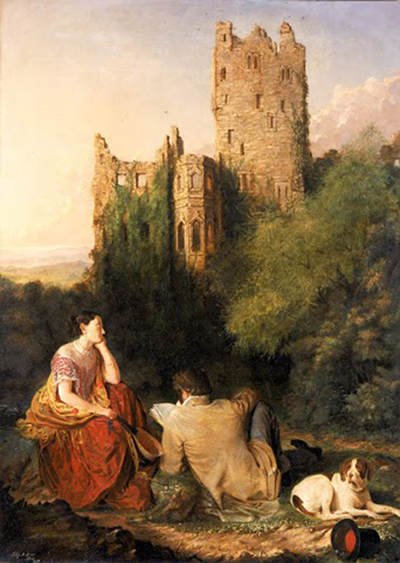
Reading the Legend
By Lilly Martin Spencer (American, 1822-1902). Oil on canvas. Gift of Adeline Fling Wing, Class of 1898, and Caroline Roberta Wing, Class of 1896. Selected by Florie Seery ’83.
There was a terrific exhibit at the Metropolitan Museum of Art on 19th-century American painting. I am a fan of that period and of the Hudson River School, so I was loving the exhibit. So many evocative, bucolic paintings, filled with social history. Just when I didn’t think it could get any better, I saw a beautiful painting by a woman artist, unusual for the time period and unusual for this exhibit, so I took note. It was Reading the Legend, by Lilly Martin Spencer, and it was lent to the Met by the Smith College Art Museum. It is a beautiful painting. My eyes welled up with tears. I was so proud of Smith!
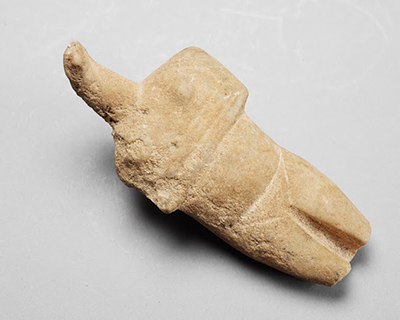
Cycladic Figure of a Woman
Unknown. Stone sculpture. Gift of Dr. Aron and Toby Cole Krich in memory of Ely Chinoy ’75, Mary Higgins Gamble Professor of Sociology and Anthropology. Selected by Joan J. Earley-Wilcox ’92.
As an Ada Comstock Scholar in 1989 I was a Philosophy Major. I took the Art History survey course and discovered this marvelous piece of sculpture and was so captivated by it I made Art History my minor. I have gone on to obtain my Doctor of Arts, with Classics as my Major and Philosophy my Minor. My Doctoral Dissertation pertained to identifying a figure on the Parthenon Frieze by name! All because of the Cycladic Figure of a Woman.
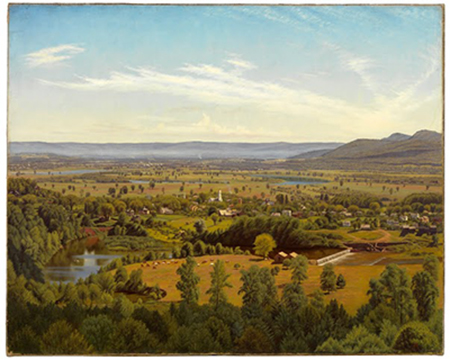
View of Northampton from the Dome of the Hospital
By Thomas Charles Farrer (British, 1839-1891). 1865, oil on canvas. Selected by Carol Berner, lecturer, education and child study.
My favorite museum moment happened last July during a visit from Clarke School students investigating the theme of “Water and Works of Art.” We started the morning visit on the sunny dock of the Boat House where children soaked in the scenery and made sensory observations of Paradise Pond. Inside the Museum we looked at artworks inspired by water, starting with the 2nd-century mosaic of Pyramos and ending with the ever-popular Artist-designed Restrooms.
In the middle of the tour we gathered around Thomas Farrer’s 1865 landscape painting View of Northampton. The museum educator skillfully engaged the students: “What do you see in this picture? How would you describe the trees, the surface of the water, the sky? What buildings do you notice?”
Children’s responses were dwindling when one further question triggered an epiphany: “Does this place remind you of any place you have been before?” Silence. Suddenly a 12-year old boy in an oversized t-shirt jumped up and shouted: “YES! We have seen this before!! TODAY!!!” Everyone turned to stare at him, and back at the painting, as the thrill of discovery splashed across their faces and they felt the ripples of Paradise Pond.
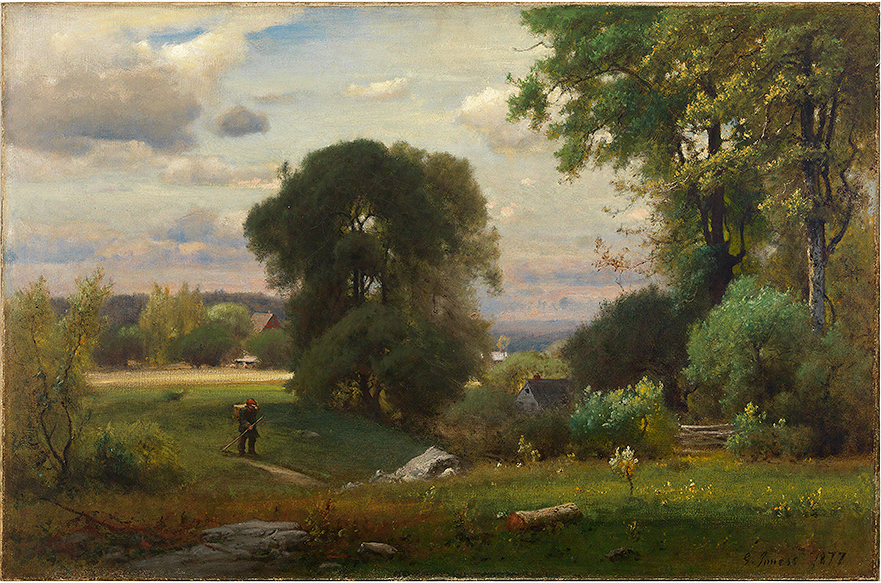
Landscape
By George Inness (American, 1825-1894). 1877, oil on canvas. Bequest of Frank L. Harrington in honor of Louise Cronin Harrington ’26. Selected by Rebecca Whitin Mitchell ’00.
From the moment I saw this painting it invited me into it. The log in the foreground pointing the way, the traveler’s red cap, echoed in the red chimney of the house, nestled within the trees, and again in the red roof peak in the background. Patches of sunlight encourage me to notice this young sapling, that field, those leaves. Diagonal lines gently zig and zag throughout the picture, asking me to keep looking, keep thinking. The strong vertical trees anchor me in this place, and in this moment.
Seventeen years ago I spent hours in front of this painting, gathering ideas for one of my first art history papers. My professor Caroline Houser told me that a work of art becomes like an old friend when you look at it closely and thoughtfully. Every time I return to Smith, I pay a visit to this old friend, and many more.
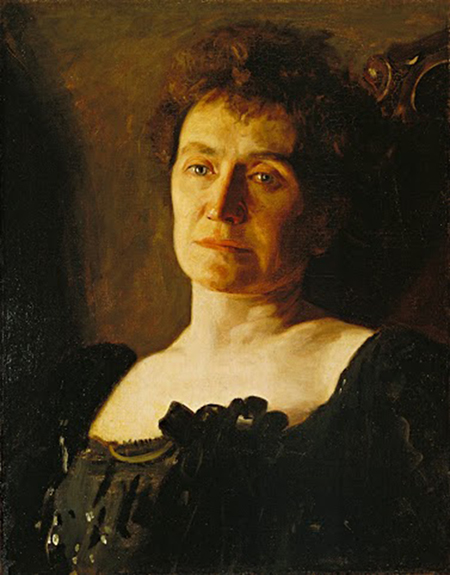
Mrs. Edith Mahon
By Thomas Eakins (American, 1844-1916). 1904, oil on canvas. Purchased with the Drayton-Hillyer Fund. Selected by Catharine Johnston Westlake ’58.
What a pleasure to reflect on why this painting remains my favorite at Smith through the past 59 years. I came to Smith looking for real values to keep me steady in life. This painting embodies those values in straightforward reality without pretense.
This accomplished woman and pianist tells me that one can lean back and survive tragedies in life while retaining the beauty of having lived and the strength to carry on. Time and time again I have returned to this painting to remind me to focus on those qualities in my life: survival, the staying power of living close to unpretentious beauty, strength, and compassion.
As Sylvan Schendler wrote in his biography of Thomas Eakins: “Mrs. Mahon is entirely feminine in the projected quality of her deep sensitivity, but her eyes, turned away from the spectator, express personal injury and pain in a way that drives all comparisons out of mind. The intense light falling upon face and breast has a quality of the absolute about it, the light in which the entire course of a life is revealed.”
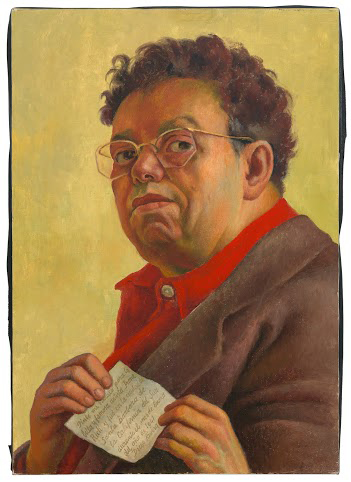
Self Portrait
By Diego Rivera (Mexican, 1886-1957). January 1941, oil on canvas. Gift of Irene Rich Clifford. Selected by Luisa Motten ’83.
This picture always spoke to me when I was at Smith, maybe because I had lived in Mexico for a couple of years. I had admired Diego’s work and the self-portrait was insight into who he was. When the Smith collection came west to the Seattle Art Museum in 2002, it was such a moving experience for me to see the art again. It was like seeing old friends and it brought back memories of hours wandering through the art museum, a place where I found peace and joy.
Landscape by George Inness is one of 36 works chosen by alumnae, students, teachers, friends and neighbors of Smith to help welcome President McCartney.